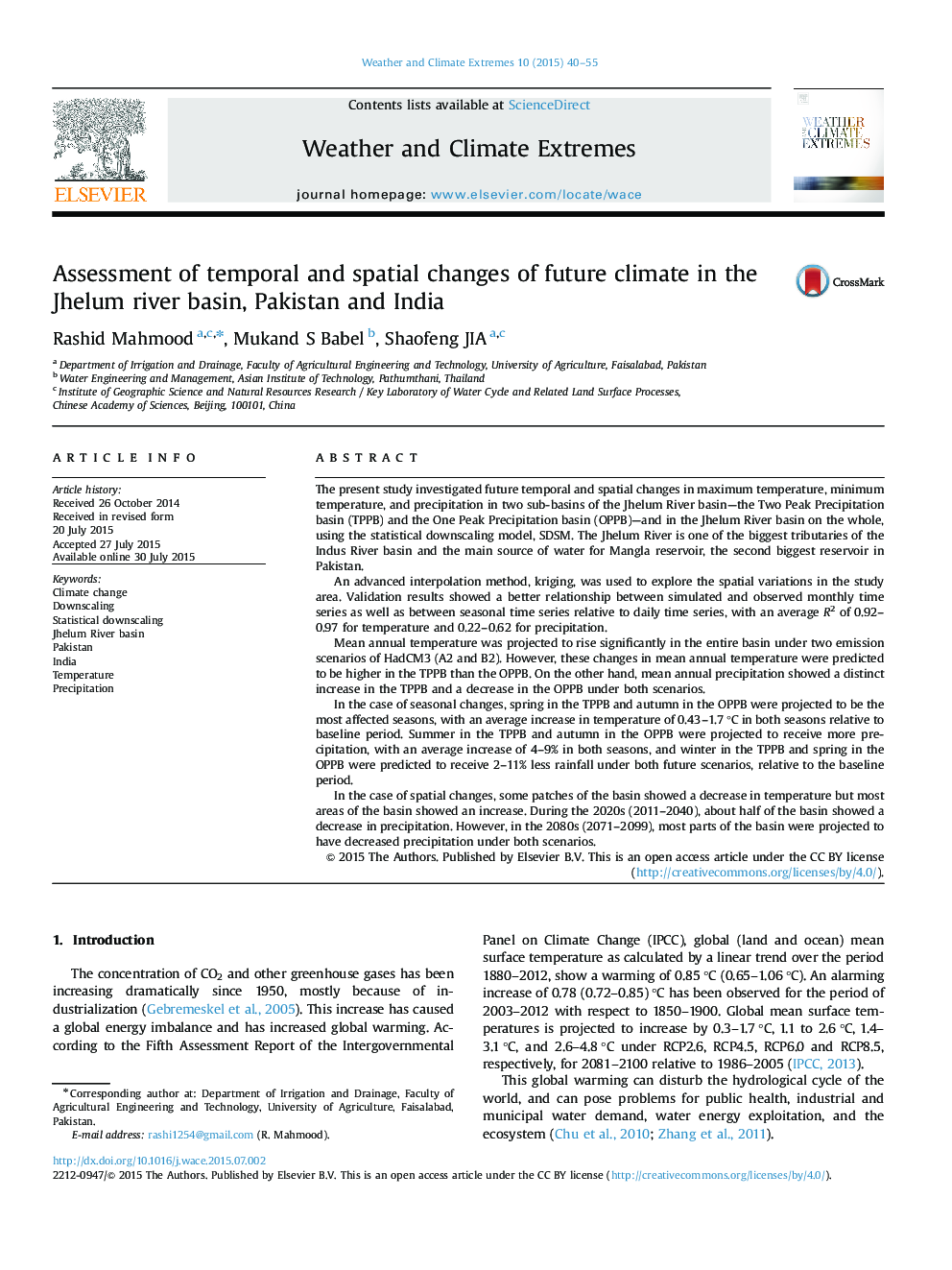| کد مقاله | کد نشریه | سال انتشار | مقاله انگلیسی | نسخه تمام متن |
|---|---|---|---|---|
| 1066647 | 1485947 | 2015 | 16 صفحه PDF | دانلود رایگان |
The present study investigated future temporal and spatial changes in maximum temperature, minimum temperature, and precipitation in two sub-basins of the Jhelum River basin—the Two Peak Precipitation basin (TPPB) and the One Peak Precipitation basin (OPPB)—and in the Jhelum River basin on the whole, using the statistical downscaling model, SDSM. The Jhelum River is one of the biggest tributaries of the Indus River basin and the main source of water for Mangla reservoir, the second biggest reservoir in Pakistan.An advanced interpolation method, kriging, was used to explore the spatial variations in the study area. Validation results showed a better relationship between simulated and observed monthly time series as well as between seasonal time series relative to daily time series, with an average R2 of 0.92–0.97 for temperature and 0.22–0.62 for precipitation.Mean annual temperature was projected to rise significantly in the entire basin under two emission scenarios of HadCM3 (A2 and B2). However, these changes in mean annual temperature were predicted to be higher in the TPPB than the OPPB. On the other hand, mean annual precipitation showed a distinct increase in the TPPB and a decrease in the OPPB under both scenarios.In the case of seasonal changes, spring in the TPPB and autumn in the OPPB were projected to be the most affected seasons, with an average increase in temperature of 0.43–1.7 °C in both seasons relative to baseline period. Summer in the TPPB and autumn in the OPPB were projected to receive more precipitation, with an average increase of 4–9% in both seasons, and winter in the TPPB and spring in the OPPB were predicted to receive 2–11% less rainfall under both future scenarios, relative to the baseline period.In the case of spatial changes, some patches of the basin showed a decrease in temperature but most areas of the basin showed an increase. During the 2020s (2011–2040), about half of the basin showed a decrease in precipitation. However, in the 2080s (2071–2099), most parts of the basin were projected to have decreased precipitation under both scenarios.
Journal: Weather and Climate Extremes - Volume 10, Part B, December 2015, Pages 40–55
